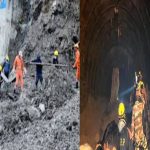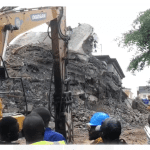After hours of drilling through the rubble of rock, concrete, and mud, the rescue team was able to free all 41 construction workers who had been stranded in a collapsed mountain tunnel in Northern India for 17 days.
The men were finally pulled out on wheeled stretchers in the Himalayan State of Uttarakhand, after days of numerous rescue attempts that failed to reach them by mere meters. The attempt occurred through a 90-centimeter (three-foot) wide steel pipe.
In approximately sixty minutes, the delicate operation’s last stage was finished.
The 4.5-kilometer (three-mile) tunnel under construction in Uttarakhand had trapped the low-wage laborers from some of the poorest states of India since it had collapsed early on November 12. Everywhere in the nation had been closely monitoring the complex and arduous efforts to get them out for days.
Before being sent to the hospital, some of the workers were visited by State Chief Minister Pushkar Singh Dhami, who gave them traditional marigold garlands. Helicopters and ambulances were waiting at the tunnel’s entrance.
The workers seemed to be in good health, according to officials at the location, where candy was being given out and firecrackers were set off in celebration.
Military engineers finally had to use the “rat-hole mining” technique, digging by hand to clear the rocks and rubble over the remaining nine metres (29 feet), with temperatures plummeting in the remote mountain location.
Authorities had said the men were safe underground, with access to light, water and medicines through a pipe. While they were being supplied with hot meals through a 15cm (six-inch) pipe after days of surviving only on dry food, they were getting oxygen through a separate pipe.
The tunnel is a part of Prime Minister Narendra Modi’s ambitious $1.5 billion Char Dham highway project, which intends to build a 890-kilometer (550-mile) network of roads connecting four Hindu pilgrimage sites.
According to some experts, the project will make the precarious conditions in the upper Himalayas worse, where a number of towns are constructed on the debris from past landslides.
The region is prone to landslides, earthquakes, and floods, though officials have not stated what caused the tunnel collapse.














